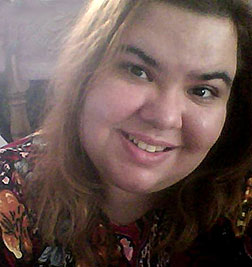Successful Solution with First Open Innovation Challenge
Interview with IdeaConnection problem solver Celia Escalante By Paul Arnold
Celia Escalante is a chemist consultant and academic coach whose first open innovation challenge was the Arsenic Penny-per-Test Challenge. Here, problem solvers worked for no financial reward to devise a cheap test that could detect the presence of arsenic in groundwater in Bangladesh.
The country is in desperate need of affordable solutions to prevent and alleviate suffering caused by the biggest mass poisoning of a population in history. Celia worked with three other problem solvers and a facilitator, and together they came up with a number of novel solutions that fitted the challenge criteria.
The winning solution was a cheap test involving paper strips that anyone can use, and that change color according to the concentration of arsenic in the water. In this interview, Celia talks about the experience of working on her first challenge, which was also her first project with IdeaConnection.
What motivated you to take part?
 I was motivated to take part in this challenge by the fact that the email that I received involved a chemical element, arsenic. It was very exciting to enter a project that involves something that I had been studying for many many years - chemistry. I am member of the National Honor Society for Women in Chemistry and I was looking for a project that involved short term achievements where I could use my experience in theory and in problem solving.
I was motivated to take part in this challenge by the fact that the email that I received involved a chemical element, arsenic. It was very exciting to enter a project that involves something that I had been studying for many many years - chemistry. I am member of the National Honor Society for Women in Chemistry and I was looking for a project that involved short term achievements where I could use my experience in theory and in problem solving. How did you first hear about the problems in Bangladesh?
The first time I became aware about the details of the potable water problems in Bangladesh was in the onset of this project. I started to gather research from encyclopaedias, looking for information online and from any resource that I could find that mentioned Bangladesh, including textbooks on geography, geology and geopolitics.
How did your team develop solutions?
My team developed solutions from the bottom up which means that we started to think about arsenic, and from there thinking about how to get the arsenic ions to be isolated and detected.
What was your role?
My role was the same as the other members. So I gathered research, came up with ideas, picked those ideas I felt could have better outcomes and edited the nomenclature. Some would say that I worked a lot, because I gave presentations and I looked at competing research, but I feel that all of our team members were able and very knowledgeable. At any moment any one of us could give that little step toward the goal. One research paper costs around $40, but thanks to Florida International University, we were able to have access to hundreds.
What are your hopes and aspirations for what you achieved?
I wouldn't mind being known as an arsenic expert, but in a good way. This project intertwined arsenic behavior and potable water needs. This is not just an issue for people in Bangladesh.
This is an issue that requires geological, earth and environment research which means there is a need for fluency which can involve geologists, hydro geologists, and chemists.
Implementation
The winning solution will be developed and implemented by Chemists Without Borders, a nongovernmental organization focused on solving humanitarian problems.
